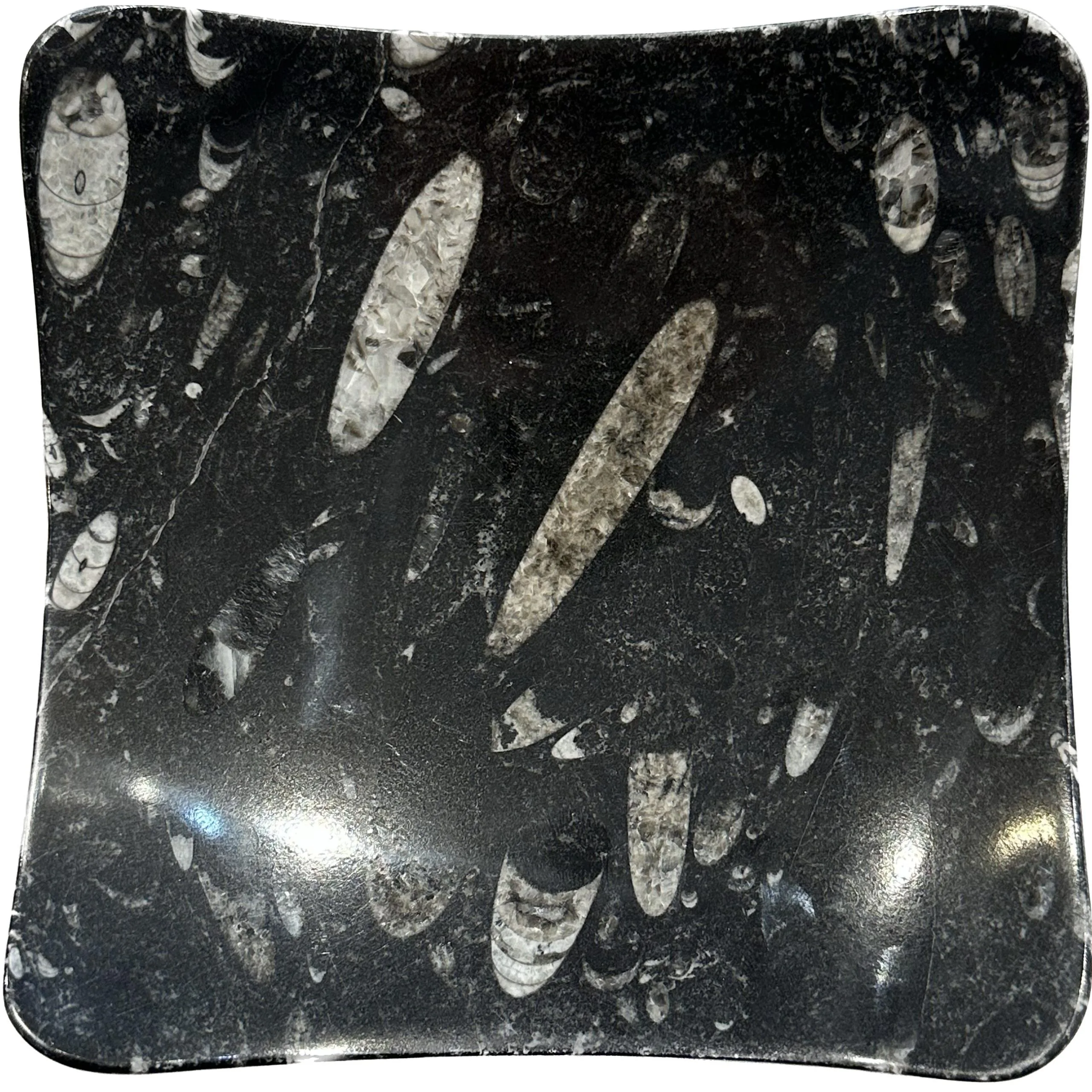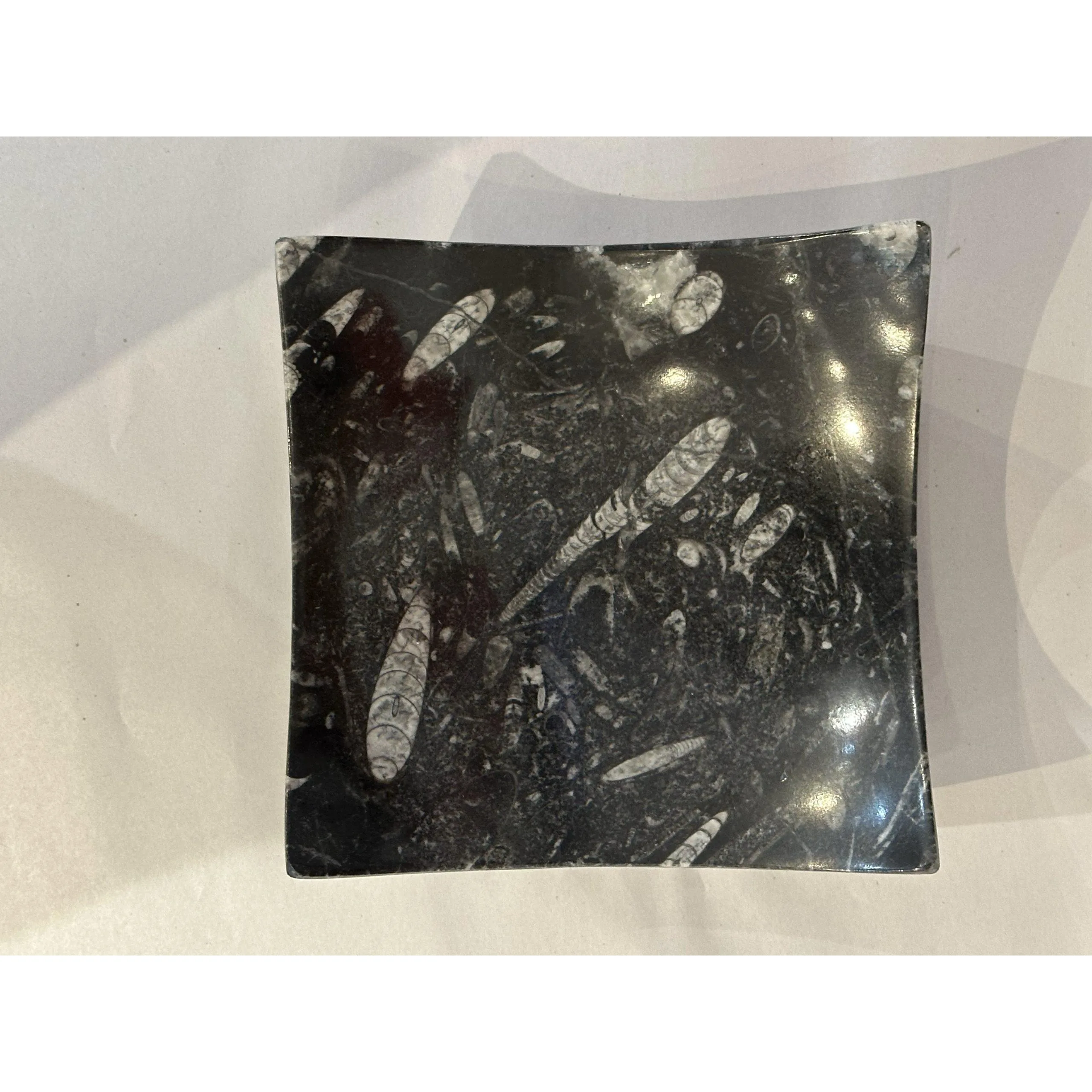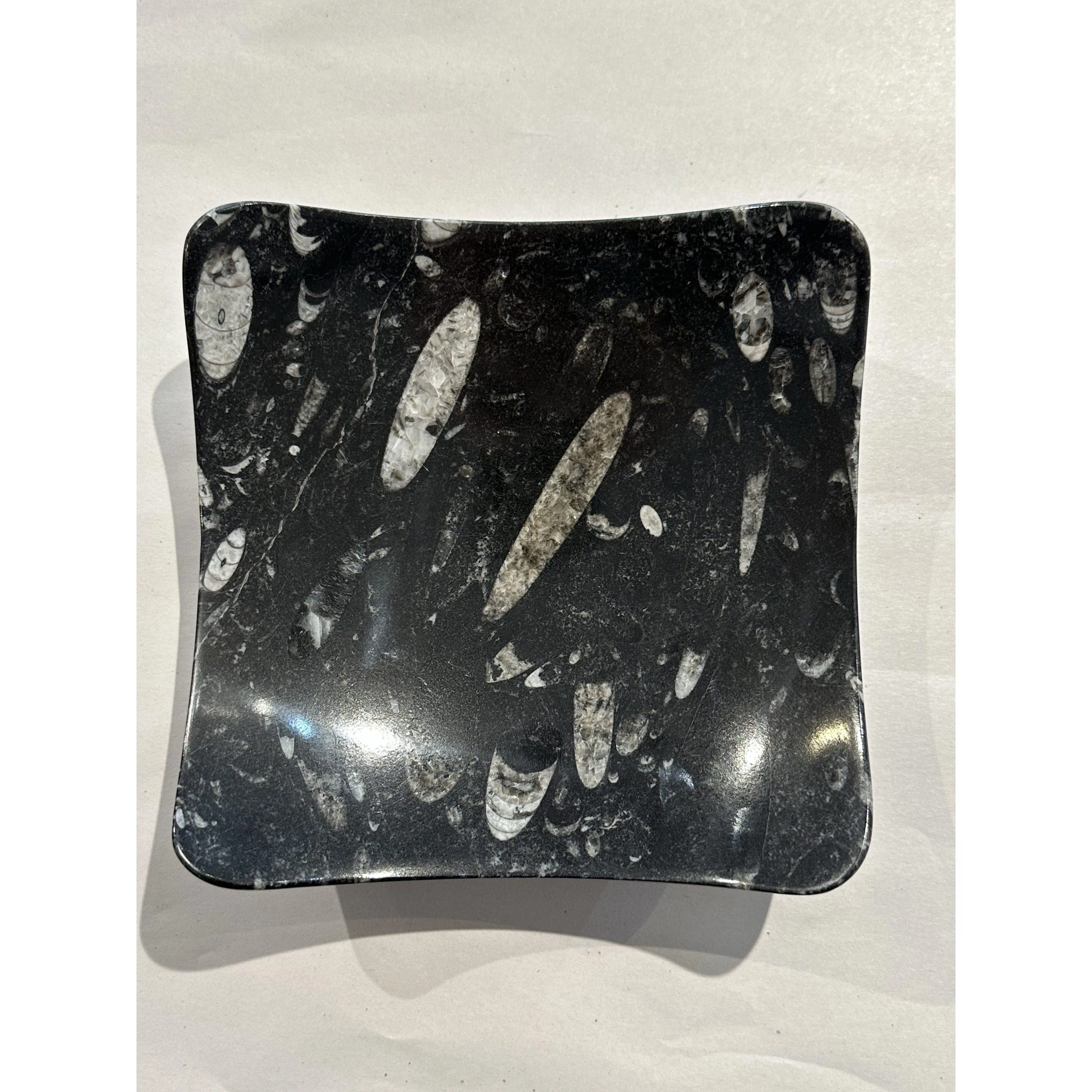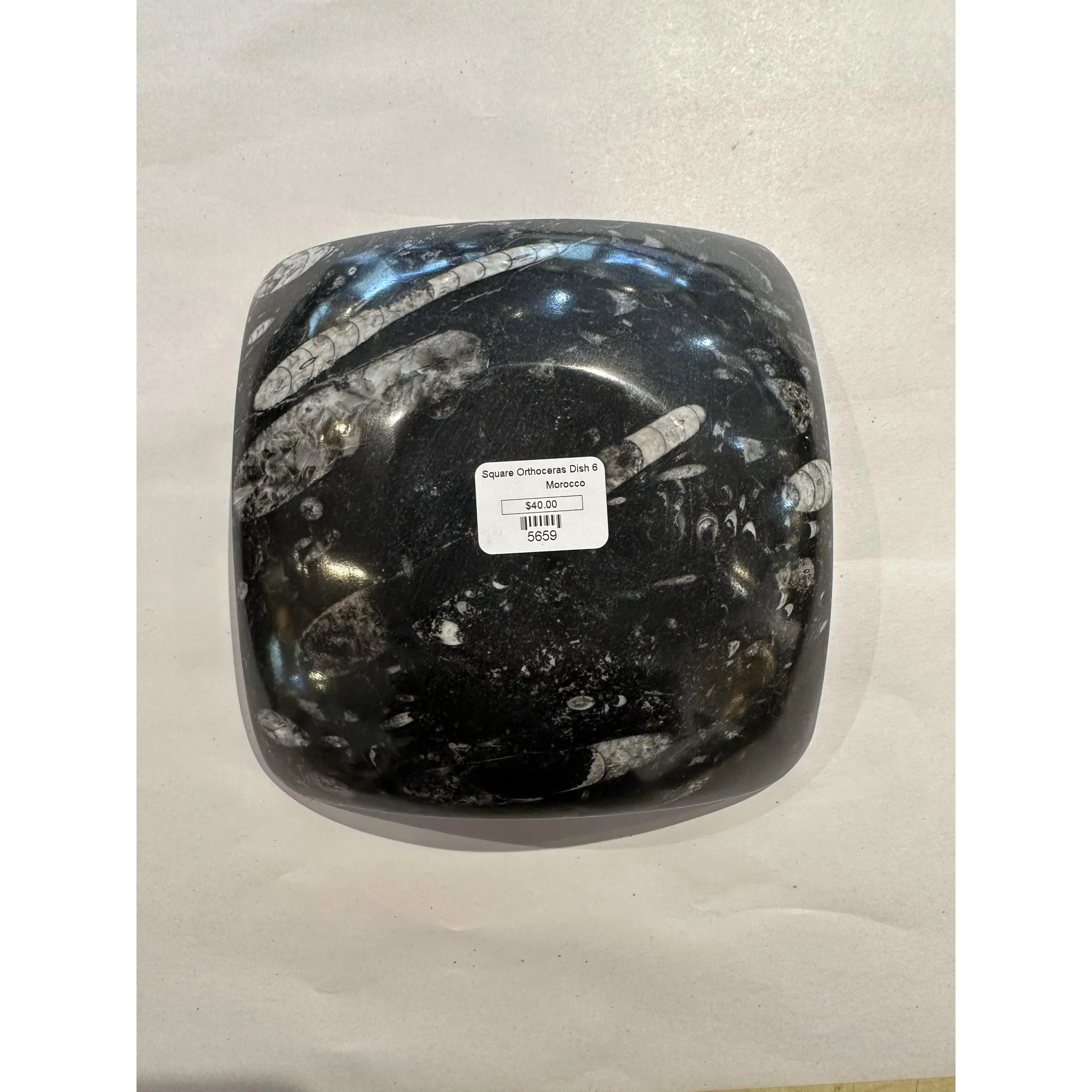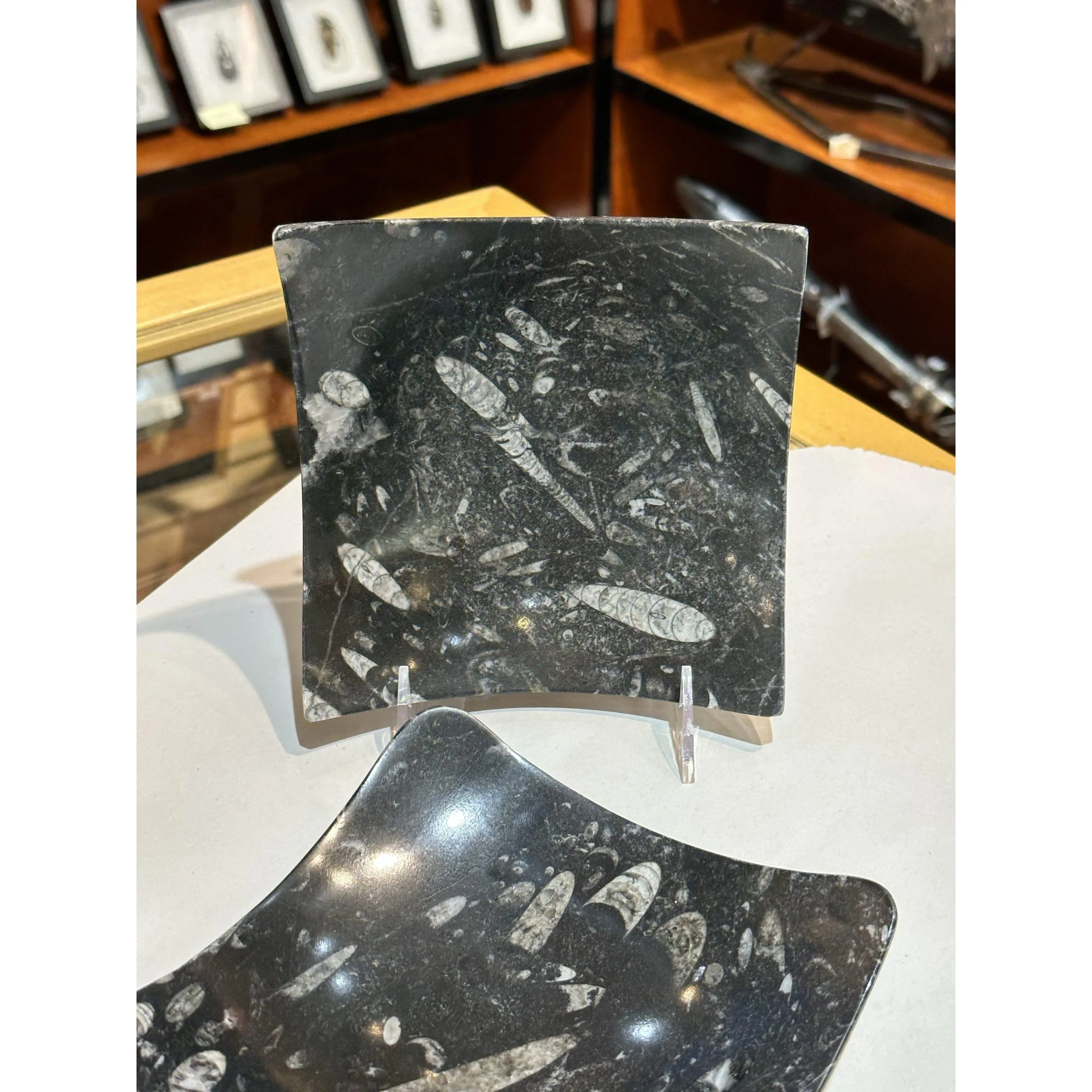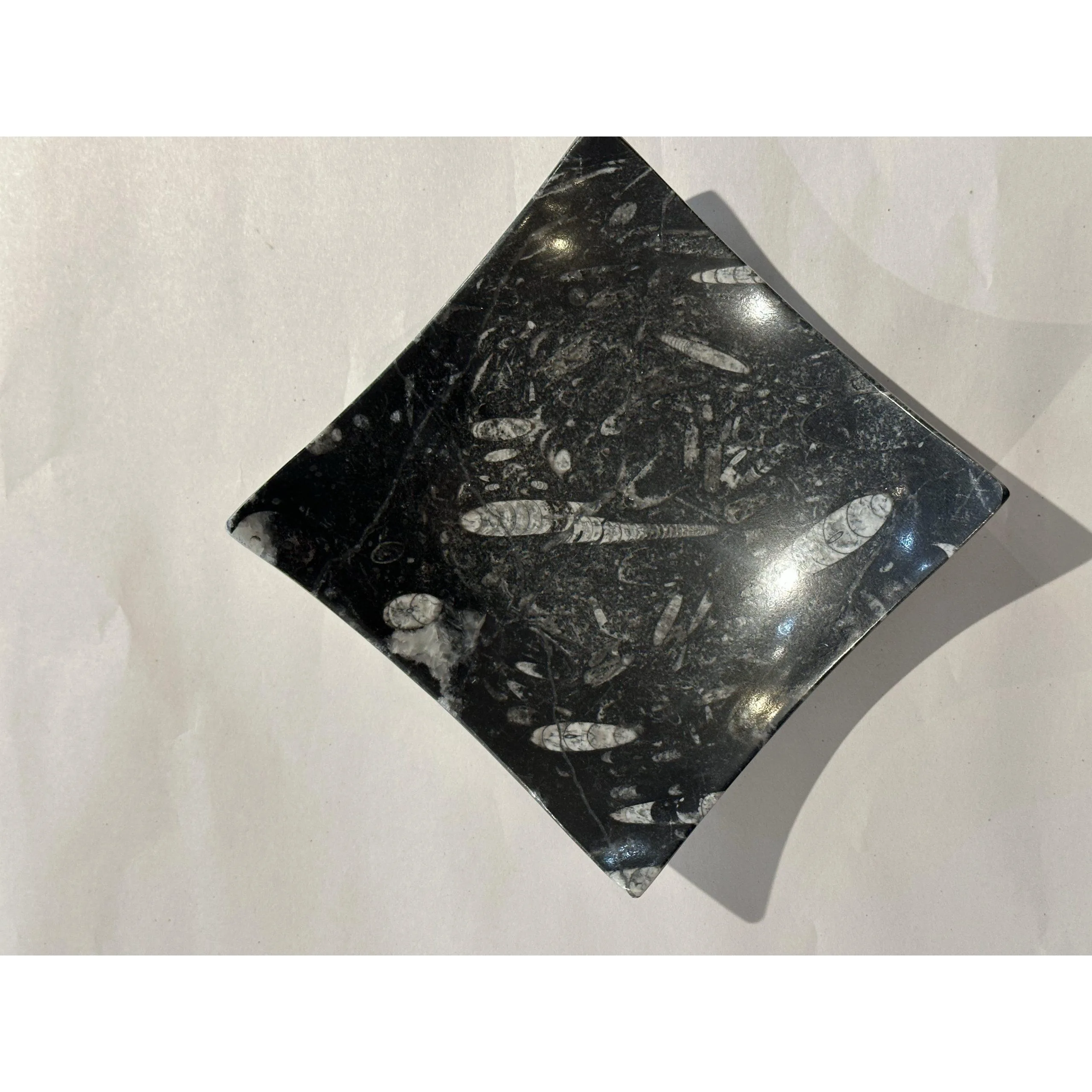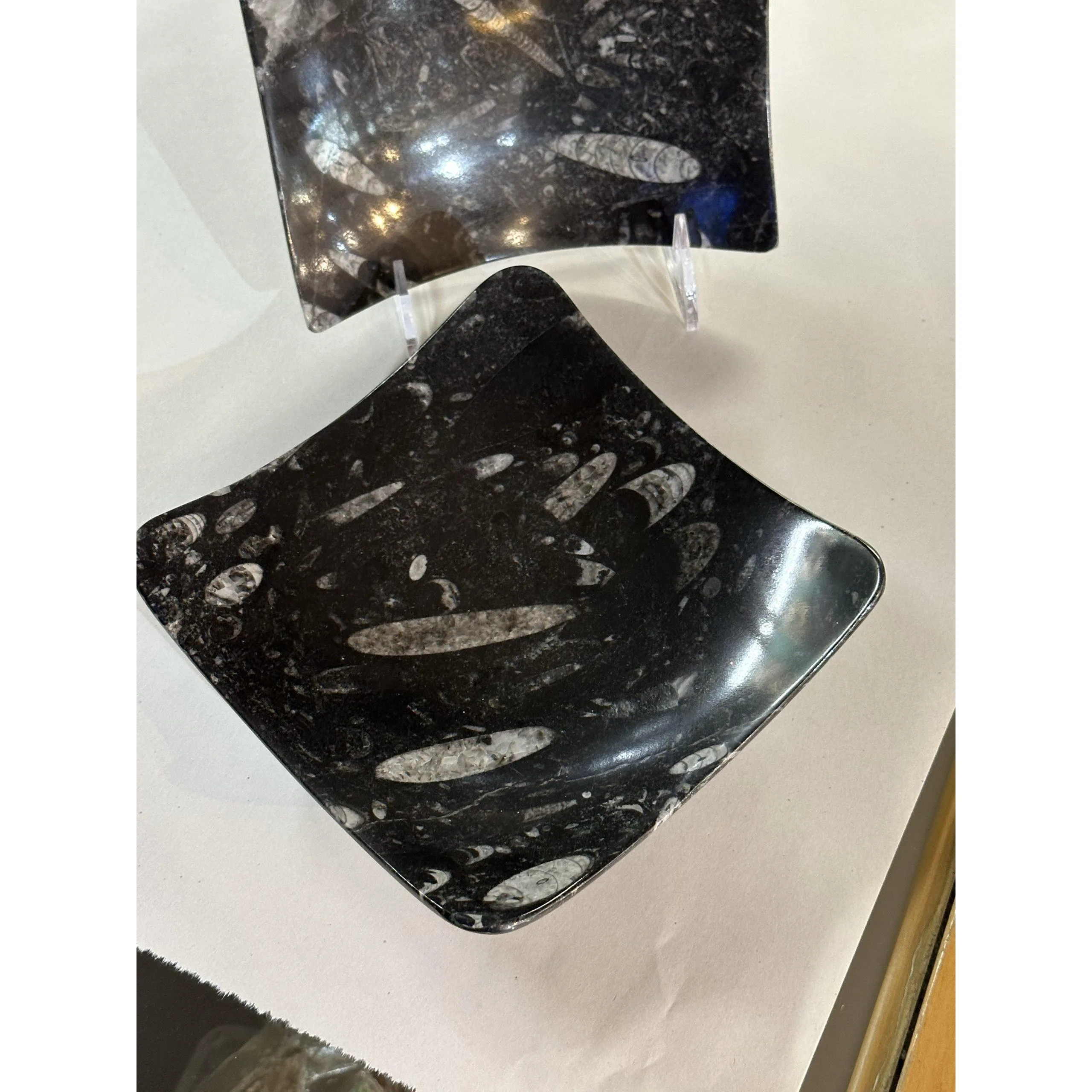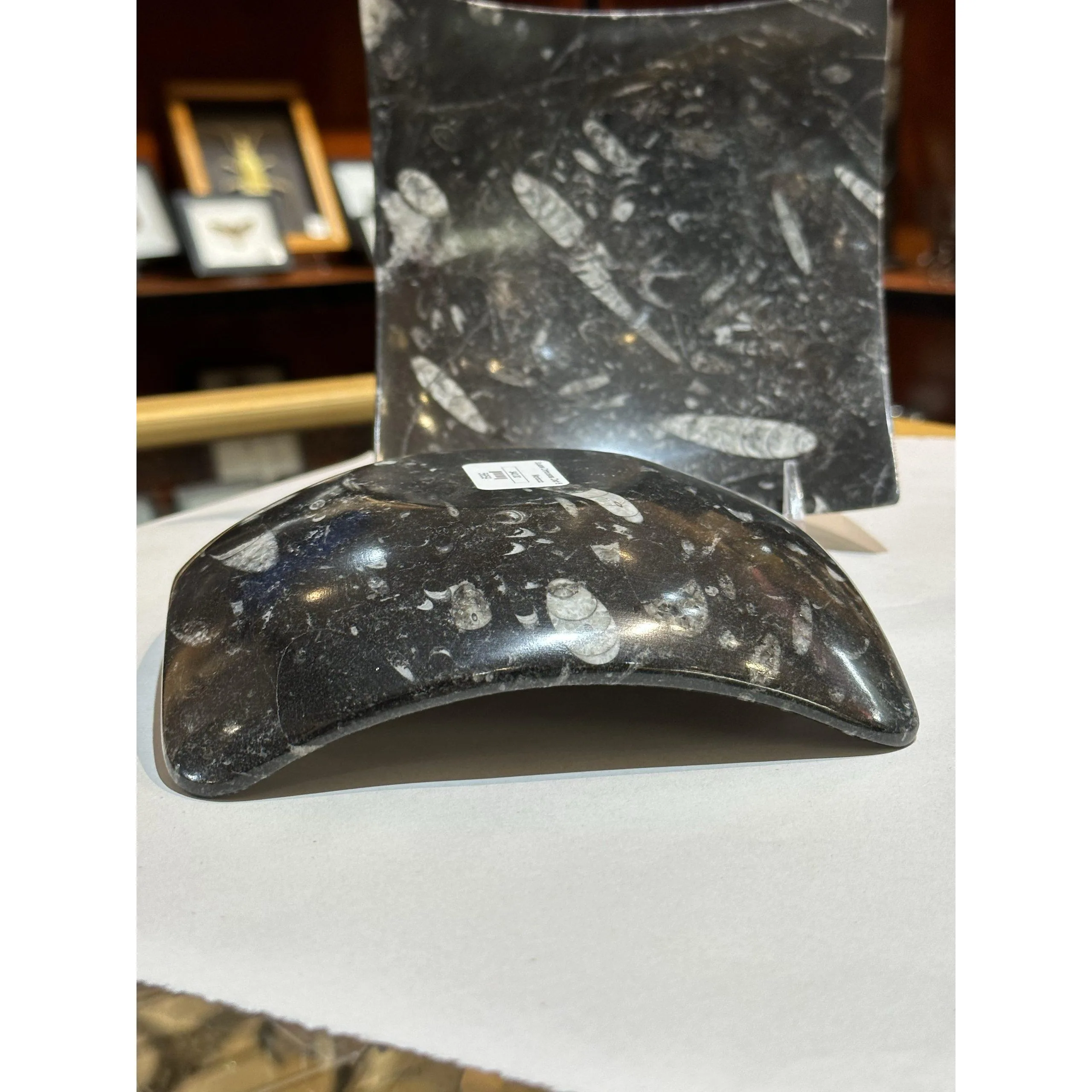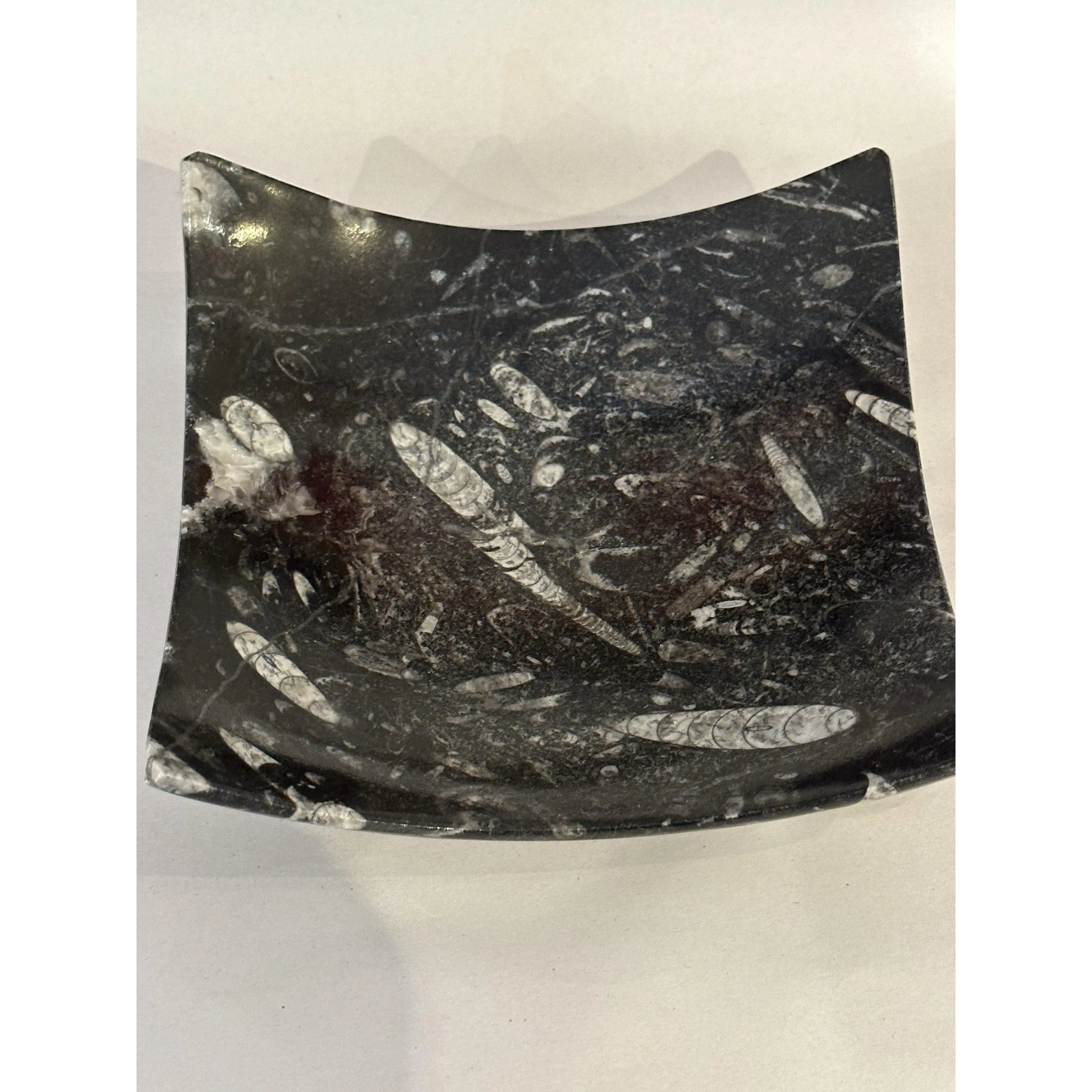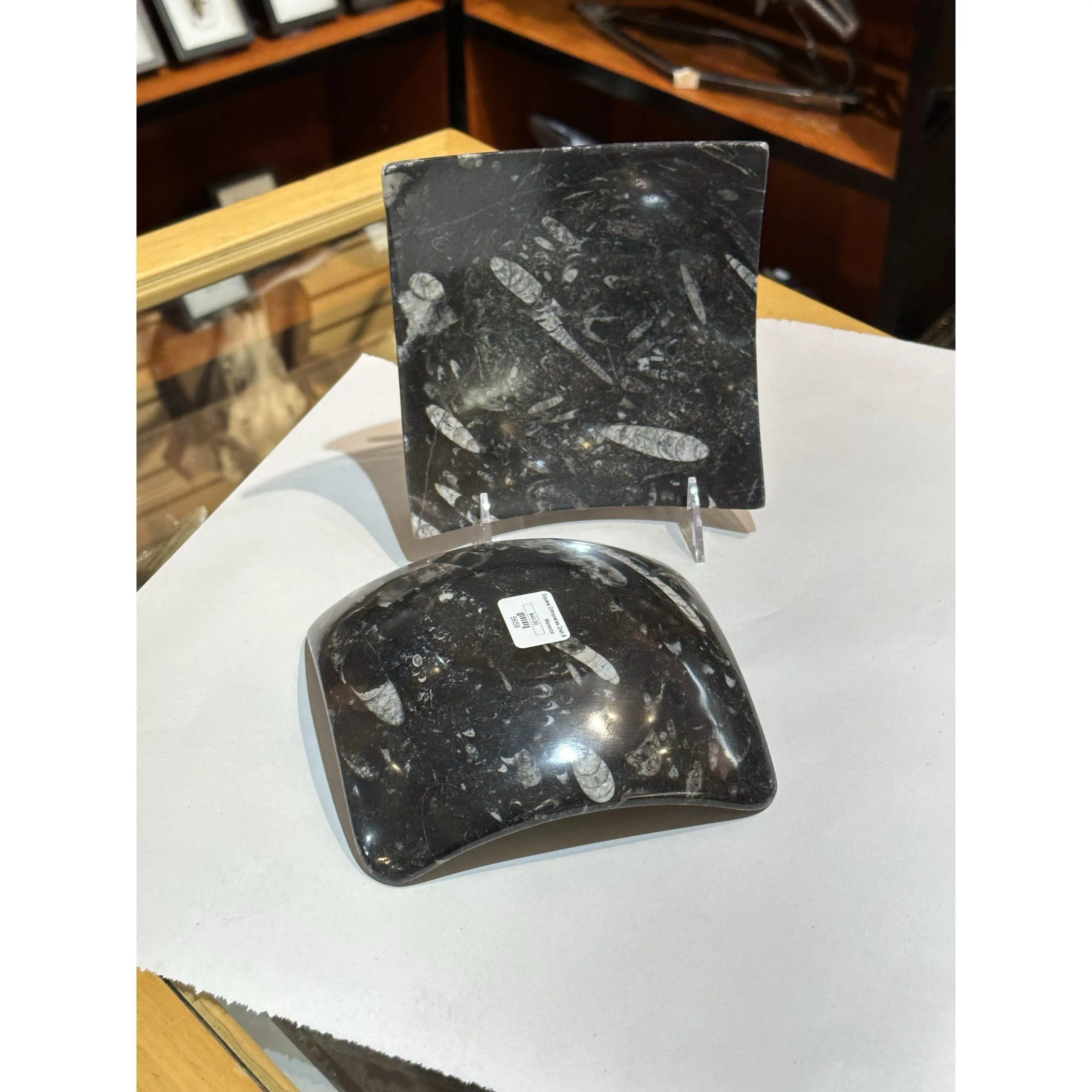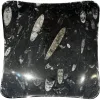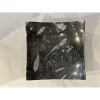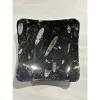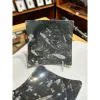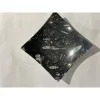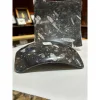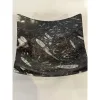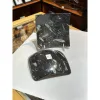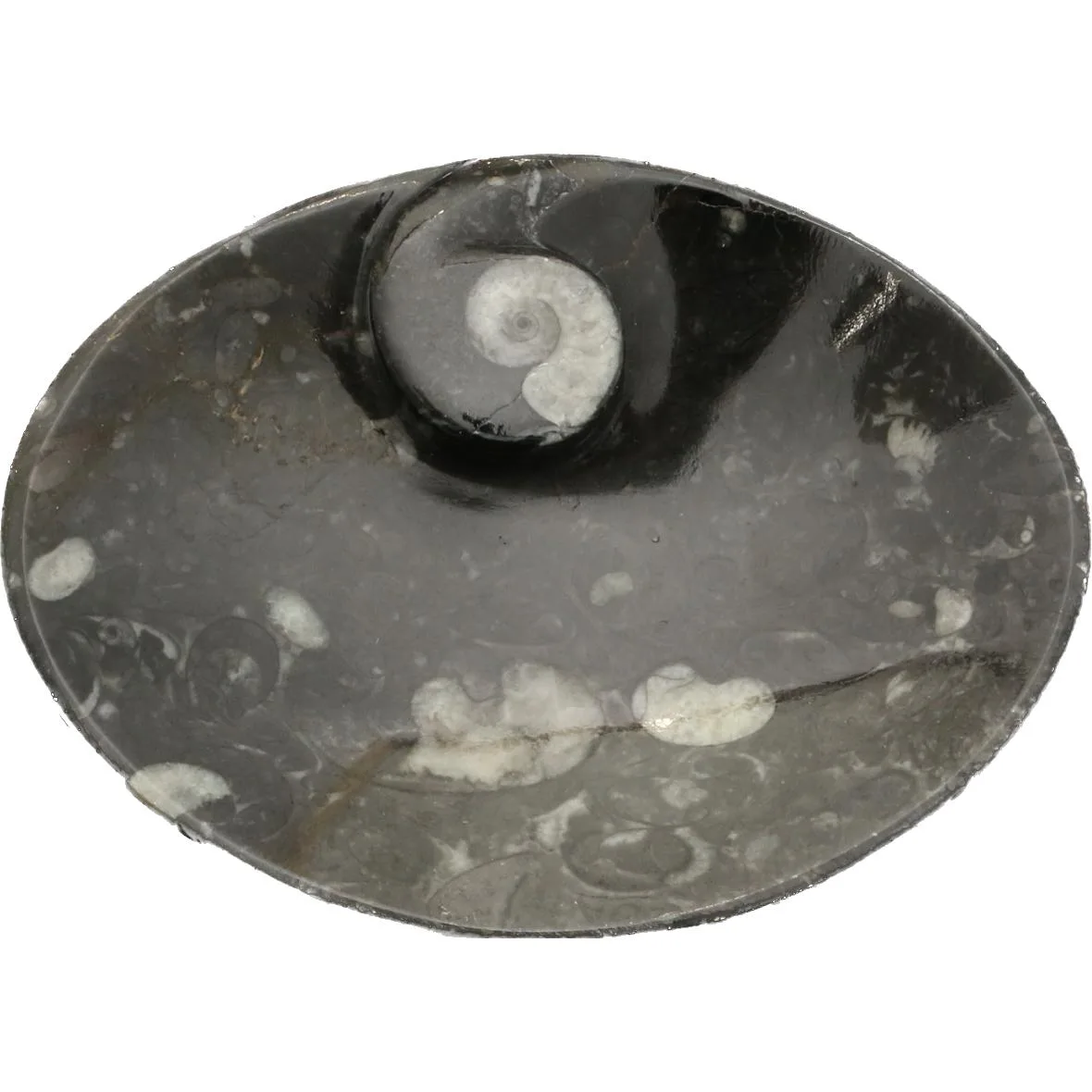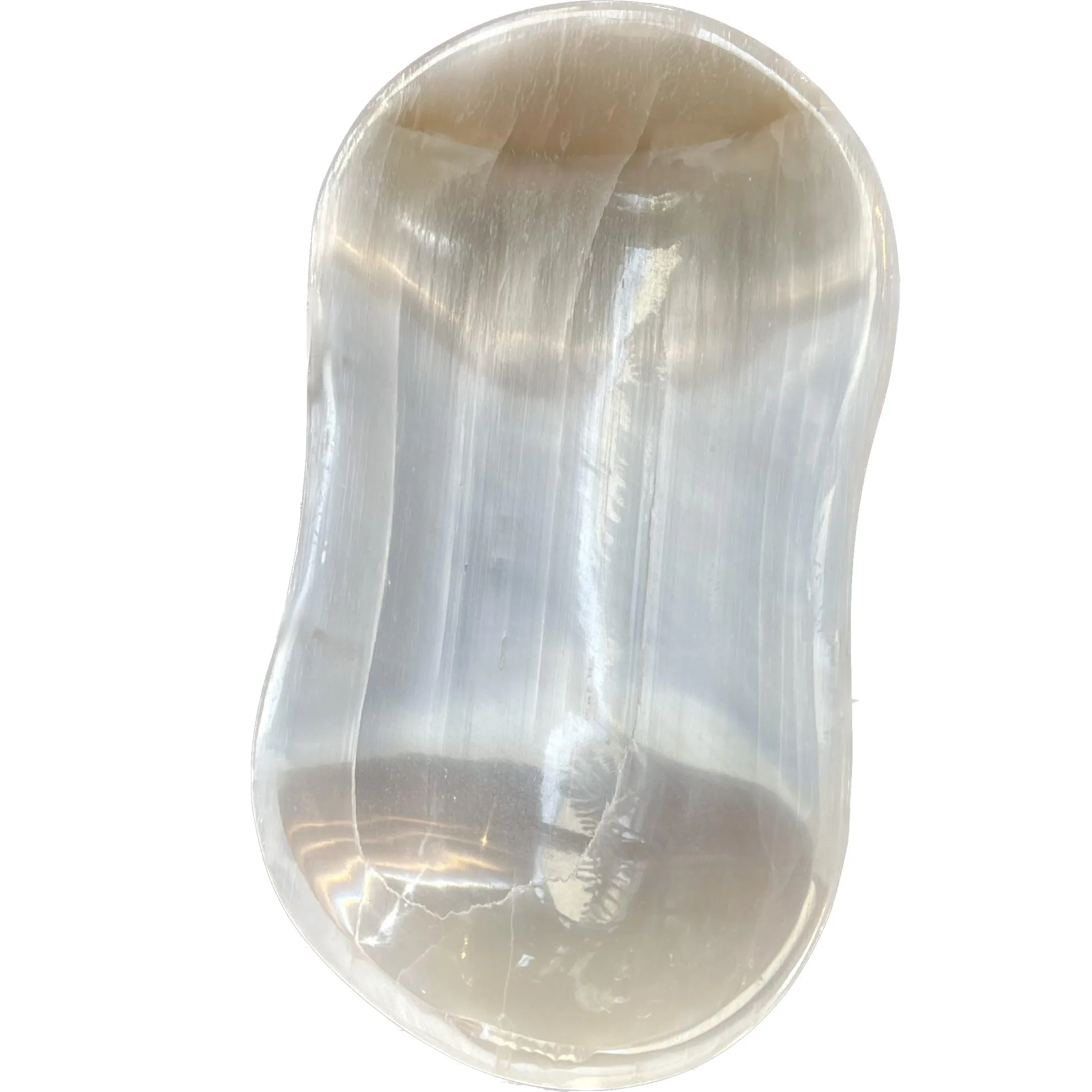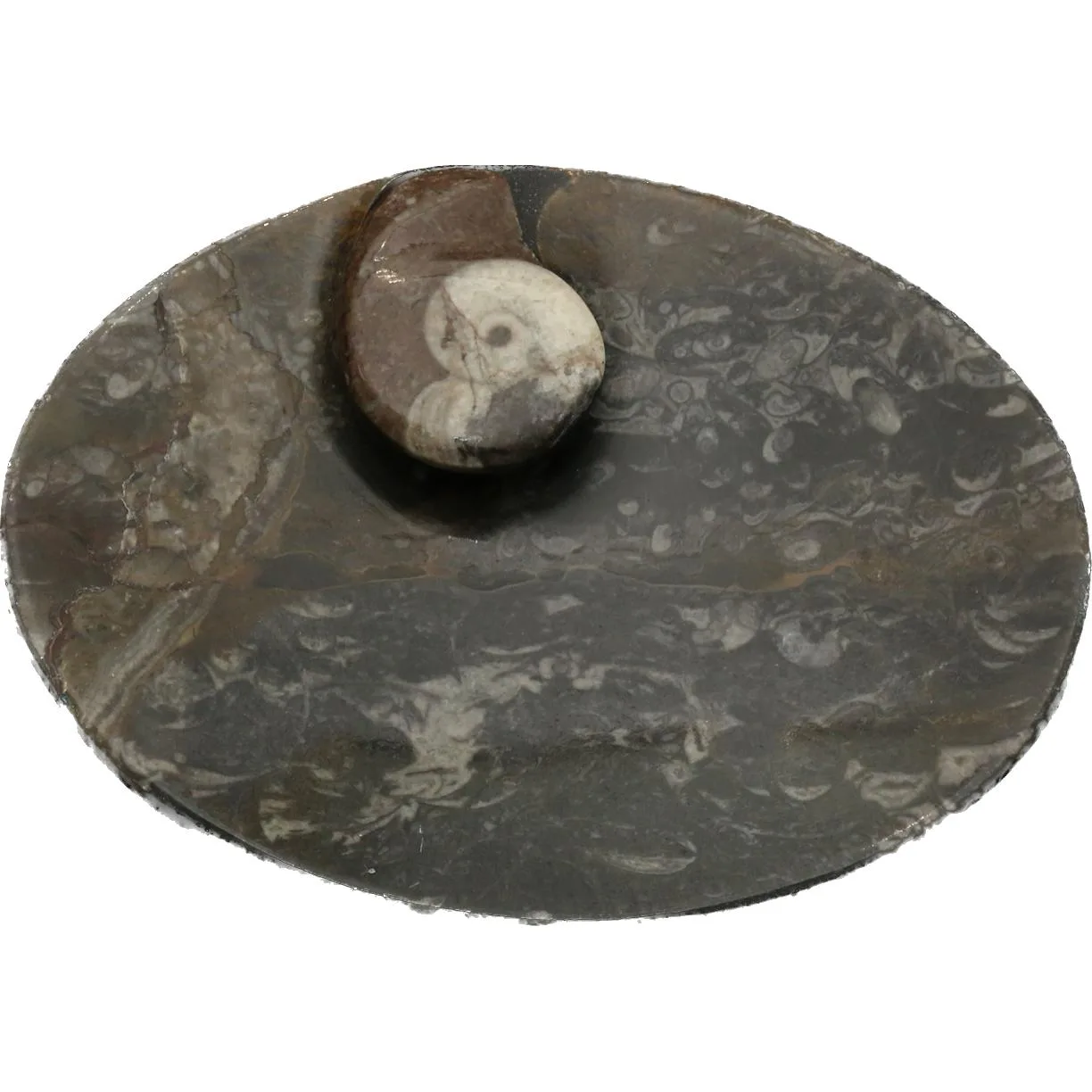This fossil orthoceras and ammonite square dish measures 6 inches and is curved. The dish contains multiple fossils in their original matrix stone.
Orthoceras is a genus of extinct nautiloid cephalopod restricted to Middle Ordovician-aged marine limestones of the Baltic States and Sweden. This genus is sometimes called Orthoceratites. Note it is sometimes misspelled as Orthocera, Orthocerus or Orthoceros.
Ammonite is a name that comes from the Greek ram-horned God called Ammon are the most widely known fossil. They are cephalopods and first appeared in the seas 415 million years ago, in the form of a straight-shelled creature known as Baculites. During their evolution, three catastrophic events occurred.
The first during the Permian period (250million years ago), only 10% survived. They went on to flourish throughout the Triassic period, but at the end of this period (206 million years ago), all but one species died. Then they began to thrive from the Jurassic period until the end of the Cretaceous period when all species of ammonites became extinct.
Ammonite fossils are found on every continent. And come in every naturally occurring color. Because of their rapid evolution and widespread distribution, they are an excellent tool for indexing and dating rocks. If an ammonite is found in clay the clay will preserve the Ammonites mother-of-pearl luster.
Ammonites began life very tiny, less than 1mm in diameter, and were vulnerable to attack from predators. They fed on plankton and quickly assumed a strong protective outer shell. They also grew quickly with the females growing up to 400% larger than the males; because they needed the larger shell for egg production. Most ammonites only lived for two years. Some lived longer becoming very large.
All goniatites possessed an external shell, which is divided internally into chambers filled with gas giving it buoyancy during the life of the animal. An open chamber at the front of the shell provided living space for the goniatitid animal, with access to open water through a ventral siphuncle. The general morphology and habit of goniatites were probably similar to that of their later relatives the Ammonites, being free swimming and possessing a head with two well-developed eyes and arms (or tentacles).

